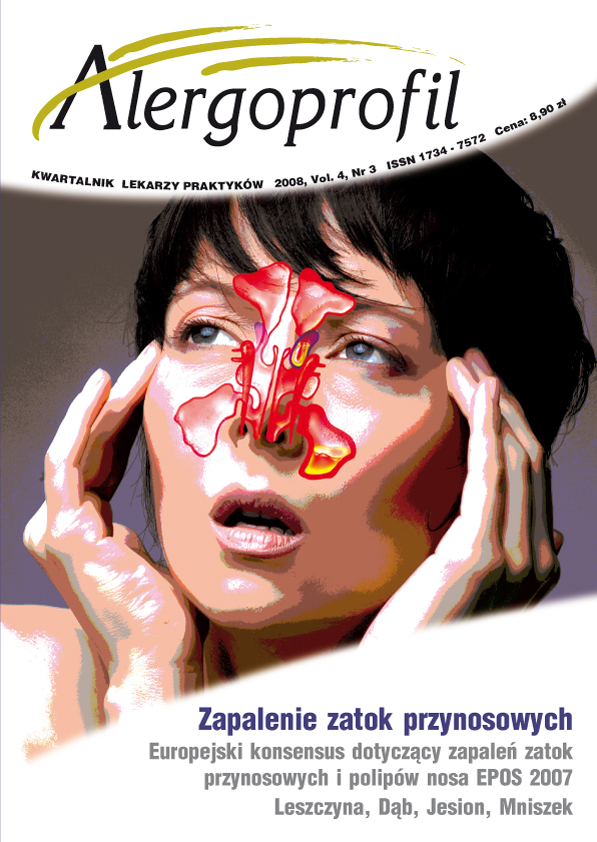Leptosphaeria genus as a source of potential mould?s allergens
Main Article Content
Abstract
Leptosphaeria (a member of the class Ascomycotina) has been noted as an important and prevalent group of fungal airspora worldwide. The color is dependant upon species from hyaline (colourless) to brown. It has subsequently been reported as having allergenic properties and has been implicated in the elicitation of respiratory allergic diseases especially in England. They are known to produce positive skin-prick test reactions.
Downloads
Article Details
Copyright: ? Medical Education sp. z o.o. This is an Open Access article distributed under the terms of the Attribution-NonCommercial 4.0 International (CC BY-NC 4.0). License (https://creativecommons.org/licenses/by-nc/4.0/), allowing third parties to copy and redistribute the material in any medium or format and to remix, transform, and build upon the material, provided the original work is properly cited and states its license.
Address reprint requests to: Medical Education, Marcin Kuźma (marcin.kuzma@mededu.pl)
References
2. Burge H.A.: Some comments on the aerobiology of fungus spores. Grana 1986, 25: 143-146.
3. Gonianakis M., Neonakis I., Darivaniaki E., Gonianakis I., Bouros D., Kontou-Fili K.: Airborne Ascomycotina on the island of Crete: Seasonal patterns based on an 8-year volumetric survey. Aerobiologia 2005, 21: 69-74.
4. Grinn-Gofroń A., Mika A.: Selected airborne allergenic fungal spores and meteorological factors in Szczecin, Poland, 2004? 2006. Aerobiologia 2008, 24: 89-97.
5. Halawagy M.: Seasonal airspora at three sites in Kuwait 1977-1982. Mycological Research 1989, 93: 208-213.
6. Hasnain S.M.: Influence of meteorological factors on the air spora. Grana 1993, 32: 184-188.
7. Ingold C.T.: Fungal spores: their liberation and dispersal. Clarendon Press, Oxford 1971.
8. Kendrick B.: The fifth kingdom. 2nd ed. Focus Texts, Newburyport, MA. 1992.
9. Lacey J.: Spore dispersal ? its role in ecology and disease: the British contribution to fungal aerobiology. Mycological Research 1996, 100: 641-660.
10. Li D.W., Kendrick B.: A year-round study on functional relationships of airborne fungi with meteorological factors. International Journal of Biometeorology 1995, 39: 74-80.
11. McDonald M.S., O?Driscoll B.J.: aerobiological studies based in Galway. A comparison of pollen and spore counts over two seasons of widely differing conditions. Clinical Allergy 1980, 10: 211-215.
12. Mitakakis T.Z., Guest D.I.: A fungal spore calendar for the atmosphere of Melbourne, Australia, for the year 1993. Short communication. Aerobiologia 2001, 17: 171-176.
13. Moore-Landecker E.: Fundamentals of the fungi. Prentice-Hall, New Jersey 1982.
14. Szweykowska A., Szweykowski J.: Botanika systematyczna. Tom II. PWN, Warszawa 1999

